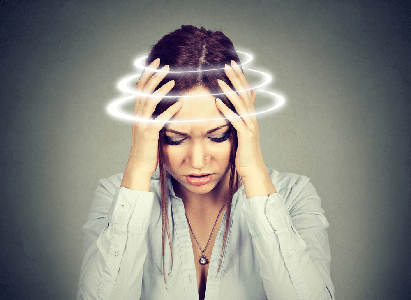Developing countries are the countries most affected by the problem of anemia. Nearly a quarter of the world's population is affected by this pathology. While anemia does not seem to affect the overall health of some individuals, in others many symptoms appear. However, the problems caused by this anomaly should not be ignored. It is a disease that can become complicated and can be fatal. In this article, find the symptoms of anemia as well as the variousappropriate treatments and necessary preventions to avoid it.
What is anemia?
The symptoms of anemia are manifested by a decrease in the number of healthy red blood cells in the blood. There is also a problem with anemia when the level of hemoglobin that makes up the red blood cells is down. This subsequently implies lack of oxygen carried by them. Therefore, the body's tissues do not function normally when the level of oxygen carried by the blood is low.
Generally the normal red blood cell count in men is 4.6 to 6.2 x 1012/L, in women 4.2 to 5.1 x 1012/L, and in children 4.1 to 5.4 x 1012/L. The normal hemoglobin level for adults is 120 to 160 g/L and in children it is 115 to 135 g/L.
An adult is anemic when his or her hemoglobin level falls below 100 g/L. A child is said to be anemicwhen his or her hemoglobin level is below 75 g/L. It should be noted, however, that even if the hemoglobin level is above these values, a case of anemia with several symptoms may occur.
The different types of anemia
It can be classified into 2 types, including central anemia and peripheral anemia.
It is referred to as central anemia when the deficiency is in the production of red blood cells and hemoglobins at the bone marrow level. The main causes of this condition are iron deficiency and deficiency of B vitamins including B9 and B12. In fact, these elements have an essential role on the production of red blood cells and hemoglobin.
Other factors may also cause this type of abnormality such as disappearance of bone marrow stem cells. It may also be due to an abnormality in the structure of the bone marrow or to decreased hormonal stimulation.
It is referred to as peripheral anemia when hemoglobin production is normal, but the decrease is caused by loss of a considerable amount of red blood cells. This abnormality can occur as a result of bleeding, or by the destruction of blood cells. hemolysis. Indeed, there is a case of hemolysis when a foreign body invades the red blood cells or when the red blood cells are fragile because of certain abnormalities.
The different causes of anemia
Many factors can cause anemia. However, the most commonly encountered cases are nutritional deficiency. In addition to consuming foods low in iron, vitamin B9, and B12, other diseases such as kidney failure, inflammatory diseases, or a problem with the bone marrow can also cause this problem. In women, menstruation abundant are also causes of the onset of this condition.
The symptoms of anemia

When hemoglobin and red blood cell levels are slightly below normal, symptoms of anemia are not noticeable. However, when a severe case occurs then the following symptoms may occur:
- General fatigue
- Weakening of the body
- Shortness of breath with or without effort
- Discomfort
- Pale complexion
- Breathing problem
- Tachycardia
- Chest pain
- Hypotension
- Dizziness
- Headaches
- Loss of appetite
In pregnant women
Iron-deficiency anemia is a common problem in pregnant women. This condition is characterized by iron deficiency. Indeed, the insufficiency of iron during pregnancy is explained by the fact that the fetus uses the elements of its mother to develop. It requires iron from its mother to make its red blood cells. Therefore, it is important that the mother has enough iron to support her child's need and her own needs.
In infants
Anemia is a very common case in newborns and infants. It is most often due to an iron deficiency since birth. It is important that the mother has an adequate supply during the 3th month of her pregnancy. It is especially during this period that the fetal reserve is formed. Children under 2 years of age may also be prone to a case of iron-deficiency anemia due to malnutrition. They do not consume enough iron rich, vitamin B9 and B12 foods.
What are the treatments for anemia?
To diagnose this condition, the physician performs a hemogram to assess the hemoglobin level and to measure the mean blood volume or MGV. A blood test to measure iron levels and a urine test to check the amount of vitamin B12 can also be done.
In a severe case of anemia, the physician may perform erythropoietin injections as well as a blood transfusion. More severe cases may require bone marrow transplantation. If it is a simple deficiency, a treatment of up to 3 months of iron and vitamin B12 or B9 supplementation can be prescribed.
In a case wherethe pathology resultsfrom heavy menstruation, in women, hormonal treatment may be recommended. If another disease is causing anemia, it is important to treat the disease first and then make up for the deficiencies.
Sources:
https://www.ncbi.nlm.nih.gov/pmc/articles/PMC5398260/
https://www.cancer.ca/fr-ca/cancer-information/diagnosis-and-treatment/managing-side-effects/anemia/?region=qc
https://www.maxisciences.com/blog/sante-nutrition-1/quels-sont-les-symptomes-de-lanemie-199/blog/sante-nutrition-1/quels-sont-les-symptomes-de-lanemie-199-definition-traitement-symptomes-causes-de-quoi-s-agit-il_art35092.html



